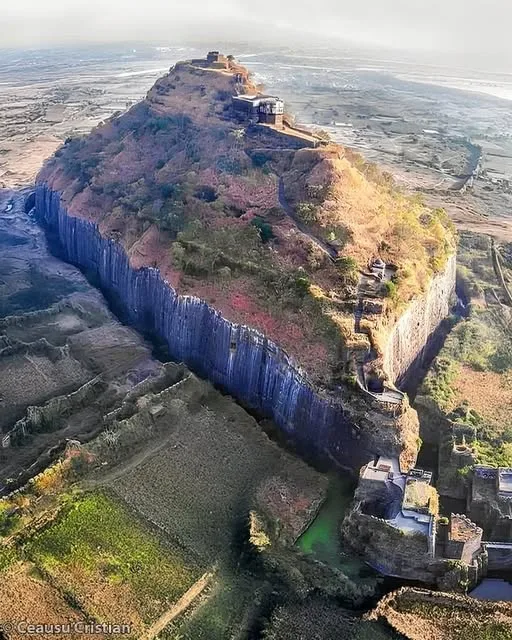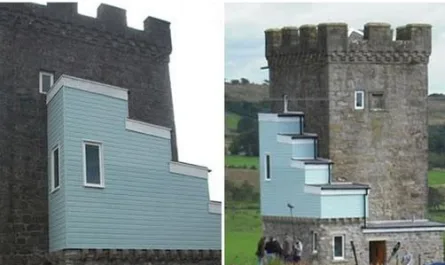Daulatabad Fort: A Majestic Sentinel Carved from Rock
Perched atop a towering 50-meter-high rock slab in Maharashtra, India, Daulatabad Fort rises as a formidable symbol of strength, blending natural fortitude with human ingenuity. Constructed in the 12th century, this impregnable fortress has guarded the Deccan Plateau for over 800 years, its strategic location and robust rock barriers earning it a reputation as an unconquerable stronghold. A testament to enduring grandeur, Daulatabad continues to captivate visitors with its storied past and architectural marvels as of July 2025.

Historical Context
Originally known as Devagiri, Daulatabad Fort was built in 1187 by the Yadava dynasty under King Bhillama V, serving as the capital of the Yadava kingdom. Its name changed to Daulatabad (“City of Fortune”) in 1327 when Sultan Muhammad bin Tughluq of the Delhi Sultanate attempted to relocate his capital here, though the plan was abandoned due to logistical challenges. Over centuries, the fort passed through the hands of the Bahmani Sultanate, the Nizam Shahi dynasty, the Mughals, and the Marathas, each leaving their mark. Its history reflects a tapestry of conquests, sieges, and resilience, withstanding invasions due to its formidable defenses.
Architectural and Strategic Design
Daulatabad Fort’s design is a masterpiece of military architecture, leveraging its natural rock formation for defense:
- Natural Fortress: The 50-meter-high basalt rock, rising abruptly from the surrounding plains, forms an almost vertical cliff, making direct assaults nearly impossible. The rock’s summit, covering about 95 acres, provides a commanding view of the region.
- Multiple Layers of Defense: The fort features three concentric lines of walls, each with bastions, gates, and moats. The outermost wall spans 5 kilometers, while the inner citadel is accessible only through a narrow, winding path. A unique feature is the “Andheri,” a dark, trap-filled tunnel lined with spikes and designed to disorient invaders.
- Water Management: A sophisticated system of cisterns, canals, and a moat fed by the Bhima River ensured a steady water supply, crucial during sieges. The fort’s elevated position also aided in rainwater collection.
- Chand Minar: A 60-meter-high victory tower built in 1435 by Ala-ud-din Bahmani, this minaret adds to the fort’s skyline and served as a watchtower.
The fort’s strategic location, 16 kilometers northwest of Aurangabad, controlled key trade routes between the Deccan and northern India, enhancing its military and economic significance.
Cultural and Historical Significance
Daulatabad’s history is rich with tales of valor and ingenuity. The Yadavas fortified it with advanced defenses, while the Tughluqs added administrative structures. The Bahmani and Nizam Shahi rulers embellished it with mosques, palaces, and the Chand Minar, reflecting Islamic architectural influences. The Marathas later reinforced its walls, cementing its legacy as an unconquerable stronghold. The fort’s ability to repel invasions, including those by Alauddin Khilji in 1296 (though Devagiri fell later), underscores its design’s effectiveness.
The site also holds cultural importance, with legends of hidden treasures and secret passages adding to its mystique. Its role as a capital, albeit briefly, highlights its political prominence in medieval India.
Preservation and Visitor Experience
Designated a Monument of National Importance by the Archaeological Survey of India (ASI), Daulatabad Fort is maintained with efforts to preserve its stone structures and moats. As of July 2025, the ASI has stabilized the rock face and restored key features like the Chand Minar, though some areas remain inaccessible due to safety concerns. The fort is open daily from 6:00 AM to 6:00 PM, with an entry fee of 25 INR for Indians and 300 INR for foreigners.
Visitors can explore the winding paths, climb to the summit for panoramic views, and navigate the Andheri tunnel (with a guide and flashlight). The surrounding landscape, dotted with villages and fields, enhances the fort’s dramatic presence. Posts on X praise its “unreal fortress vibes” and “history soaked in every stone,” though some note the steep climb and tunnel’s claustrophobic challenge.
Challenges and Future Prospects
The fort faces threats from weathering, erosion of the basalt rock, and tourist wear. Monsoon rains and seismic activity in the Deccan region pose risks, prompting ongoing reinforcement projects. Limited funding and staff shortages hinder comprehensive conservation, but partnerships with local universities are exploring 3D mapping to document the site.
Future plans include improving accessibility with safer pathways, developing a visitor center to educate about its history, and using drone technology for maintenance. Enhanced lighting in the Andheri tunnel could also improve the visitor experience.
Conclusion
Daulatabad Fort, perched atop its 50-meter rock slab, stands as an enduring beacon of strength and ingenuity, its cliffs and craftsmanship defying time since the 12th century. From its Yadava origins to its Mughal and Maratha chapters, the fort’s strategic design and rich history make it a testament to India’s medieval heritage. As a Monument of National Importance, it invites exploration of its secrets, offering a journey through centuries of grandeur that continues to inspire as of 2025.





